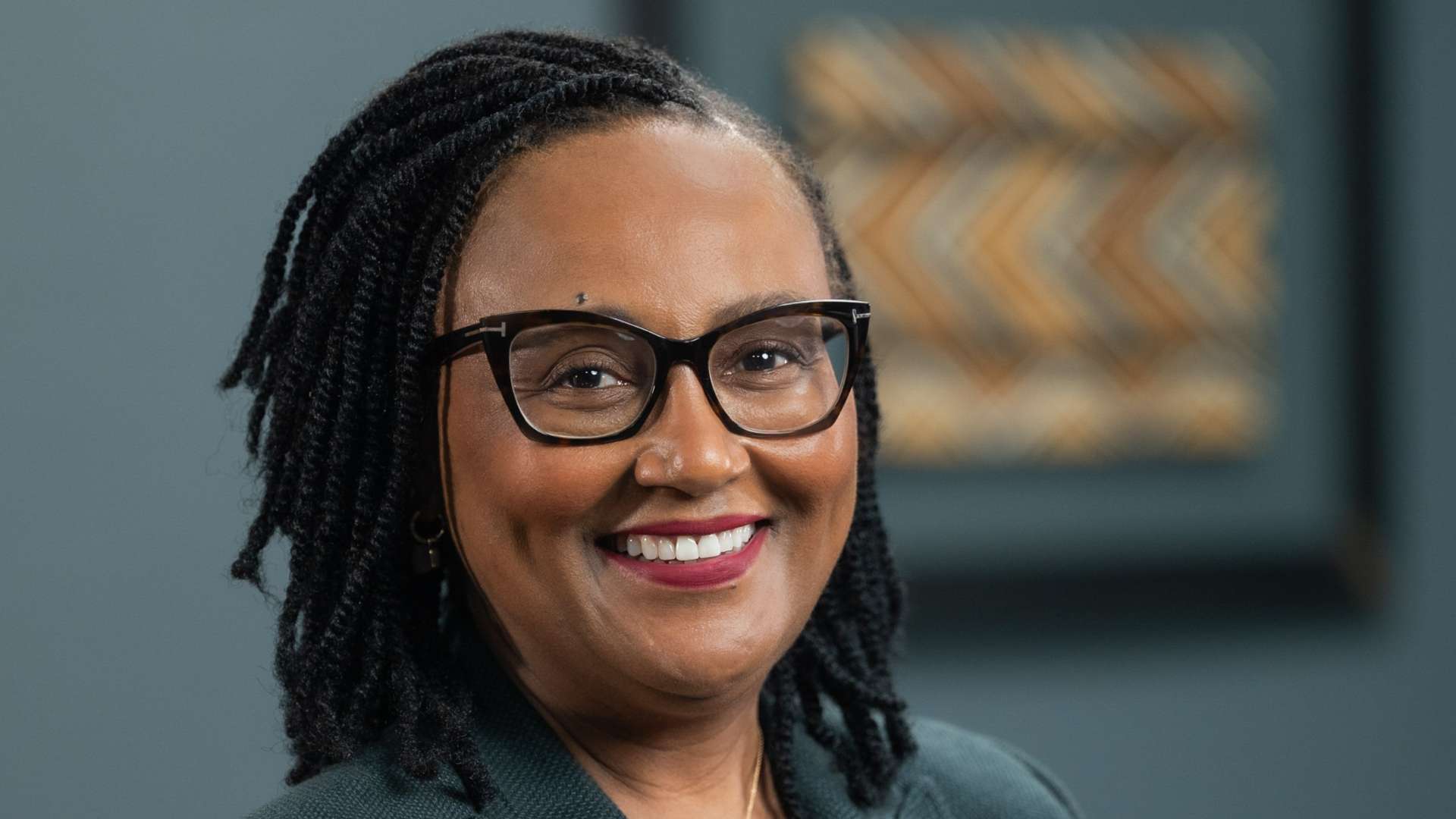Michael Chavez and Sudhanshu Palsule explore why it’s important for leaders at all levels to continually define and redefine their purpose.
The financial crisis of 2008 and 2009 toppled some of the world’s largest financial institutions, and it also crystallized the sense that business had lost its way. The power of Wall Street over Main Street came into focus. The role of business was questioned. The system was broken.
It was in the wake of that crash that ‘purpose’ became one of the biggest buzzwords of business thinking. Yet despite all the thought pieces, books, panel events and webinars, the purpose discussion has struggled to get out of second gear. We have been stuck on purpose evangelism, with true believers preaching the good news about why purpose matters and how it could solve all our business ills. That evangelism has its place, and it’s been undeniably tough to get the message through to some leaders. But it’s well past time that we moved on to talking about how leaders can make purpose a reality for people at all levels of our organizations.
We need to look at the lessons learned by companies on the purpose frontline, about what works and where there are pitfalls to be avoided. Through our research into how business can rehumanize leadership, three major lessons have emerged about what purpose is and how it needs to be managed. First, purpose has limits and constraints. Second, purpose exists at every level: not only at the corporate level, but at the individual and team level as well. Third, as a result, nurturing purpose is a continual task for leaders in every part of an organization.
Limits and constraints
One of the most important lessons learned about purpose is that it has limits and constraints. Purpose isn’t ‘blue sky’: it has to be firmly rooted in the business model and realistic about its scope. If not, companies run the risk of losing touch with their customers. Perhaps worse, they risk falling into an authenticity trap.
Some companies have illustrated these risks by taking wrong turns in their purpose journey, before adjusting course. McDonald’s is one. It shaped its company purpose around ‘honest food’, which was new territory and represented a stretch to answer the public’s concerns about ingredient sourcing and healthy eating. But the new tone failed to capture why customers come to McDonald’s. The company adopted an amended purpose, of ‘making delicious, feel-good moments easy for everyone’. That does a good job of translating McDonald’s principles of service, value and convenience into a more aspirational, human experience. As Deborah Wahl, former head of US marketing for McDonald’s, told us: “Purpose should help you get back to your core, not away from it.” Purpose has to start from the fundamental business drivers, she added: “Purpose cannot exist in isolation.”
The other reason that purpose has to align with business drivers is because it has to be authentic, or it risks falling into an authenticity trap. Another fast-food chain, Chipotle, has illustrated that danger. Its inspirational campaign, ‘cultivating a better world’, was ambitious and exciting – but it crashed hard into reality when a food safety scare broke out. The result was a 40% fall in shareholder value in 2017.
Other firms illustrate the benefits of well-crafted purposes that are aligned with the business drivers. A number of them are in financial services, a sector where many businesses have worked hard to develop effective ways of implementing purpose in the decade since the crash. Around the world, there are banks which have discovered a new sense of purpose – or, very often, rediscovered an old purpose rooted in their history, made relevant to today’s challenges. Take Australia’s ANZ Bank, which has returned to its roots with a purpose of “shaping a world where people and communities thrive”. In its 2018 annual report, it can now point to its impact in reaching more than 889,000 people to help enable social and economic participation; to A$137m in community investments; to commercial outcomes that include a great net promoter score, placing the bank third for retail in Australia; plus, a healthy bottom line result in 2018 of A$6.5bn in profits.
Nedbank is another example. One of the ‘big four’ South African banks, it defines its purpose as being to “use our financial expertise to do good for individuals, families, businesses and society”. It’s a solid purpose, but on its own, not exceptional. It is, though, well-rooted in the bank’s business drivers – taking heed of its limits and constraints, as well as the customer perspective.
The narrative and context that Nedbank brings to this statement shows that it is clear about how its expertise relates to the society it operates in, and it has used that insight to guide major business decisions. In some instances, that has enabled it to make investments and acquisition decisions that might not immediately deliver huge commercial benefit, but which lay the foundations for solid long-term growth, and have developed significant goodwill from customers (read more about Nedbank here).
Purpose at every level
The second key insight from our work has been that purpose exists at all levels. Much of the conversation about purpose so far has been about corporate purpose at a strategic level. The discussion has rarely joined the dots to two other critical areas where purpose exists: individual employees’ sense of personal purpose in their work, and the collective sense of purpose shared by teams.
For individuals, it’s vital that we build organizations where we can all realize our ‘small p’ purpose, as business author Daniel Pink calls it, which is about how we contribute every day – in contrast, or in addition to, the ‘big P’ life purpose that has become fashionable. Even if our current job is not quite our dream job, we still need to feel we are making a useful contribution through our work. This individual sense of purpose has to fit with the broader corporate purpose. We call this the purpose ‘line of sight’.
Our research suggests many organizations still struggle to create that line of sight. Take the pharmaceutical sector, to pick one. There could hardly be a sector with richer potential for inspiring purpose than one which produces products that actually save lives. In a given company, senior leaders might feel confident that they have a clear, customer-focused, inspiring and relevant purpose. Product managers and laboratory-based scientific staff will certainly be able to see a direct link between that purpose and their work. But what of an employee in accounts payable? Do they feel ownership of the purpose and play a part in its success? How about the IT services manager, or the fleet manager? In large companies, hundreds or thousands of employees fall into these categories. They might appear to be a step removed from the purpose, yet their contribution is vital to the successful functioning of the company.
Leaders cannot neglect this group. Rather, they need a three-pronged approach. One is to go the extra mile to translate corporate purpose to these areas. Secondly, they have to recognize and nurture the small p purpose. A sense of drive to make sure that customer accounts are in order, or that the enterprise IT systems are quick, reliable and secure, is enormously valuable to the company – and should not be ignored in the effort to establish a corporate purpose. The third area where purpose exists, is team purpose. Leaders have to not only translate the corporate purpose and tap into individual small p purpose, but also cultivate a sense of why specific teams exist and their role in the functioning of the organization.
Kevin Cox, former HR director for American Express, told us about his approach when onboarding new executives. Cox would sit down and ask the new starter why they thought their box on the organization chart existed, and why they had been recruited to fill that post. The same process could be used effectively with teams: what is the team there to do as a team? Why is it comprised of these individuals?
A continual task
Creating purpose is an ongoing task for leaders at all levels. Companies which have an effective purpose recognize that it is not a one-off event where purpose is defined, added to the corporate brochure, put up on the wall, and then just allowed to sink beneath the waves of corporate memory. Purpose has to be a living, breathing idea. That demands the engagement of leaders at all levels of a business, at every phase in a purpose journey: in shaping purpose when needed and in keeping it relevant for those that have it. We have identified three key elements.
 1. Translate and narrate purpose
1. Translate and narrate purpose
Leaders have to continually join the dots between the corporate purpose and business decisions. A decision that looks obvious in the management team meeting is not obvious for someone outside the room, let alone an employee in another office or another territory. How does a new product, a new hire, or even a challenging redundancy announcement relate to purpose? Effective purposeful leaders continually refer back to purpose in their internal and external communications alike, and they make sure to communicate a lot. There is an old Native American saying that important news needs to be said three times: once for each ear and once for the heart.
 2. Start conversations about team purpose
2. Start conversations about team purpose
One of the perks of leadership in business – and one of its responsibilities – is the power to start conversations. Leaders in the middle of organizations cannot rewrite a corporate purpose, but they do have the power to talk with their team members about how the team contributes to the corporate purpose. Do you have a clear, one-sentence definition of your team’s purpose? Would your team members say the same thing? If unsure, ask them individually to test their views, then hold discussions to shape a shared view. Once established, refer to it continually to keep it alive and relevant.
 3. Help unlock ‘small p’ purpose
3. Help unlock ‘small p’ purpose
Helping employees to understand and fulfill their personal purpose is hugely powerful. We know from multiple studies that intrinsic motivation trumps extrinsic – that is, incentives and rewards – when it comes to improving performance, especially for high-value creative work. A sense of personal purpose is aligned with employee engagement and satisfaction. It connects personal motivation to the organization’s purpose. Use coaching techniques to help individuals identify their personal purpose and shape performance indicators to align with that purpose, as well as the overall business and team objectives.
It may have come to prominence in the wake of the last financial crash, but purpose is here to stay. It provides a stable point of reference for leaders in today’s volatile, uncertain, complex world. As the world shifts around us, knowing what we stand for is priceless: with shared purpose, we can build businesses that are truly agile and can operate at pace, freed from 20th-century models of management that date from an industrial age. Rehumanizing leadership, and remembering that we are purposeful beings, is at the heart of business success.
— Michael Chavez is global managing director of Duke Corporate Education. Sudhanshu Palsule is an award-winning educator, CEO adviser and leadership guide. Their book, Rehumanizing Leadership, is now available in the UK and will be available in the US starting March 2020. An adapted version of this article appeared on the Dialogue Review website.



